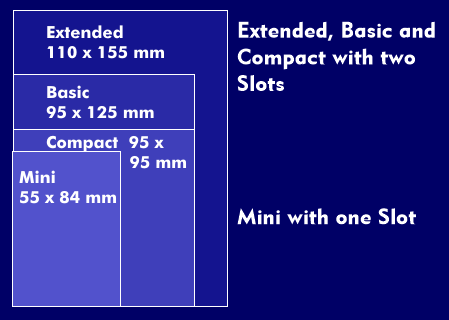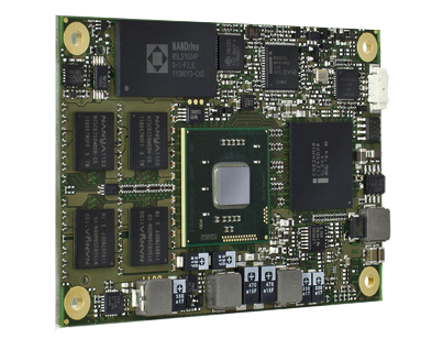COM express (COMe)
COM-Express are designs for computer modules as used in Computer-on-Module( CoM), System-on-Module (SOM) and Server-on-Module. This design, standardized by the PCI Industrial Computer Manufacturers Group( PICMG), integrates the PCI Express. COM Express modules are comparable to the SMARC module and the µQseven module.
The standardized module specifications distinguish between the module sizes Basic with 125 mm x 95 mm, Extended with 155 mm x 110 mm, Compact with 95 mm x 95 mm and Mini with 84 mm x 55 mm. While Basic, Extended and Compact each have two connectors, Mini has one connector. The modules are plugged onto the carrier board via the connectors, which each have 220 pins. The contact assignment is variable and only a few pins are defined.
The PICMG standards consider different interface standards. For this purpose, several lane configurations are stored in an Electrically Erasable PROM( EEPROM) on the carrier board andchecked when a COM Express board is plugged in. This allows COM Express boards to be operated with other bus systems in addition to PCI Express; for example, with Serial ATA( SATA), with Low Voltage Differential Signaling( LVDS) and the USB interface. The PCI-Express itself has 32 lanes, which can be bundled. Each lane, which consists of two differential pairs of lines, can transfer 250 MB/s in both directions. The COM Express specifications were developed by Intel, Radisys and Kontron.
The COM.0 R2.0 document defines two connector pinouts, Type 6 and Type 10, which can be used to adapt the COM Express to other interface standards. For example, to the Digital Display Interface( DDI), to USB 3.0 or to the second generation of PCI Express. Type 6 does without parallel PCI and instead supports multi- display applications. Type 10 has two fixed Serial ATA channels instead of four.


